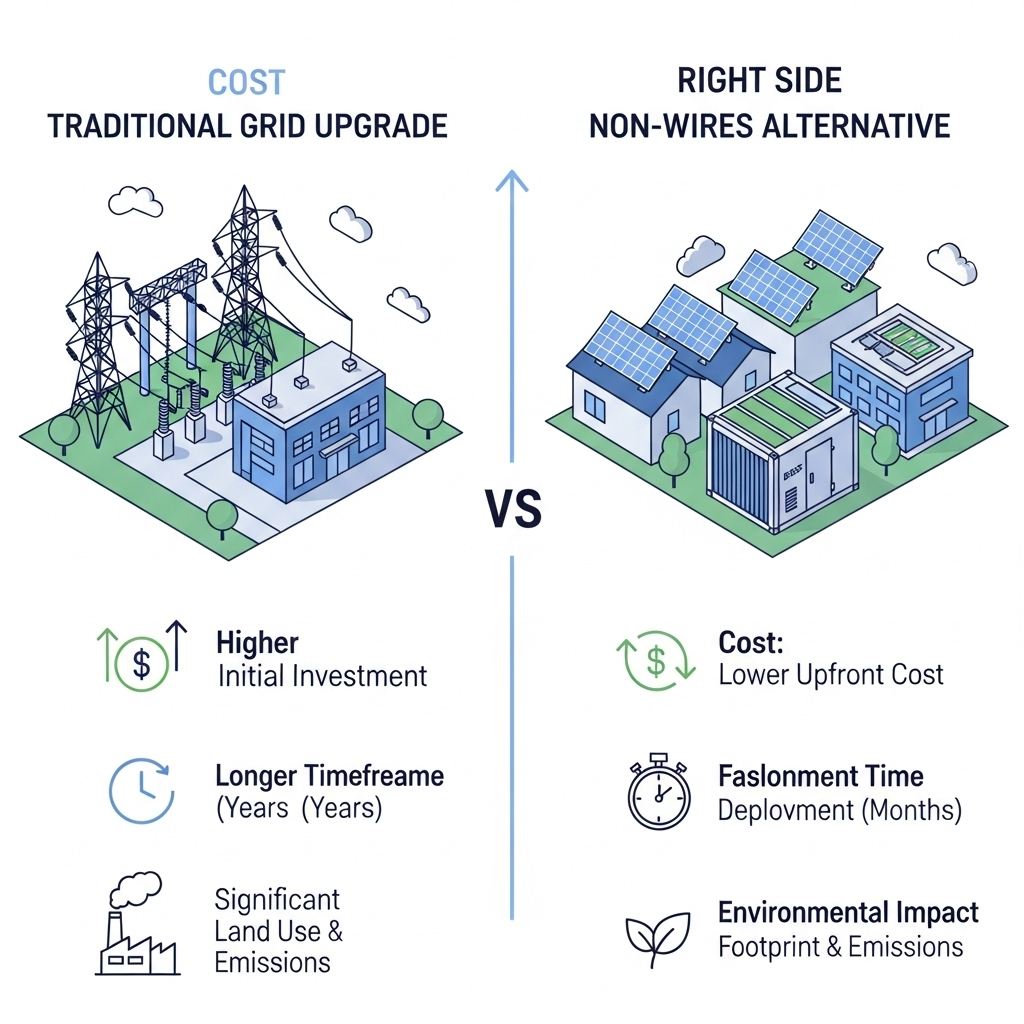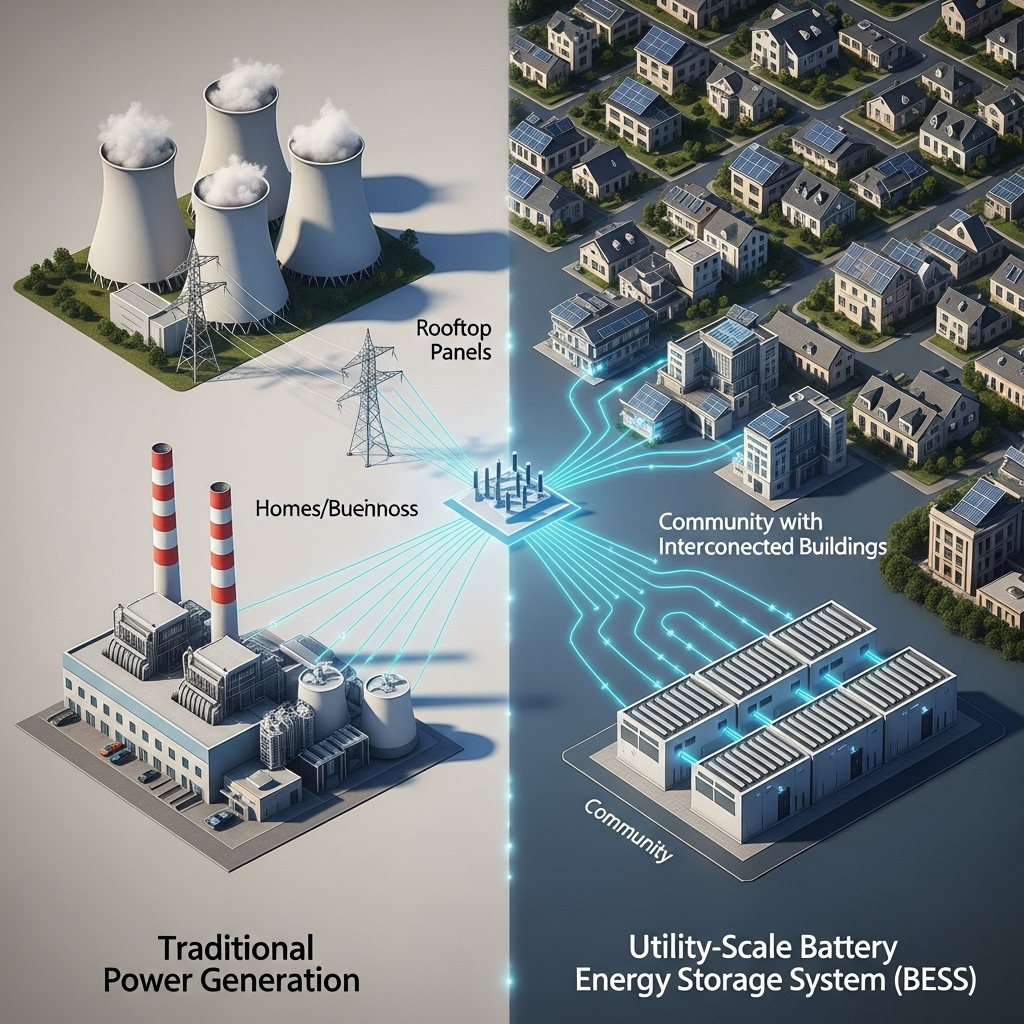The shift to electric bus fleets marks a significant step towards cleaner cities. Yet, this transition introduces a formidable challenge for our electricity grids. A fleet of electric buses requires a massive amount of power, often concentrated in specific locations and at specific times. Without a smart strategy, this new demand can overwhelm local distribution networks, leading to instability and the need for expensive, time-consuming upgrades. The solution lies in a coordinated blueprint that merges transport planning with modern energy solutions, particularly Non-Wires Alternatives (NWA).
The Scale of the Electric Bus Charging Challenge
Integrating a large electric bus fleet is not as simple as replacing diesel buses with electric ones and plugging them in. The electrical infrastructure required is substantial, and understanding its impact is the first step in effective planning.
Decoding the Demand Profile
An electric bus depot creates a unique and demanding load profile. Unlike residential demand, which is spread out, depot charging is highly concentrated. Imagine dozens of buses plugging in simultaneously after their evening routes. This can create a power demand spike of several megawatts, equivalent to the consumption of thousands of homes, all drawn from a single point on the grid. This sudden, sustained demand can strain local transformers and distribution lines beyond their designed capacity, risking equipment failure and local outages.
Grid Constraints and the Cost of Traditional Upgrades
Most existing urban distribution grids were not built to handle such concentrated loads. The traditional utility response involves significant capital investment: upgrading substations, replacing transformers, and laying thicker cables. These projects are not only expensive, often costing millions of dollars, but they can also take years to plan and complete. Furthermore, they risk creating 'stranded assets'—overbuilt infrastructure that may be underutilized if charging patterns change or technology evolves.
Leveraging NWA for Fleet Electrification
Non-Wires Alternatives offer a more flexible, cost-effective, and rapid way to manage the energy demands of electric fleets. Instead of building more poles and wires, NWAs use distributed energy resources to provide the needed capacity and flexibility.
Defining NWAs for Bus Depots
For a bus depot, NWAs typically involve a combination of on-site energy generation and storage. The most common components are:
- Solar Photovoltaic (PV) Systems: Installing solar panels on depot rooftops or adjacent land generates clean electricity on-site, reducing reliance on the grid and lowering energy costs.
- Battery Energy Storage Systems (BESS): Large-scale batteries are the core of the NWA strategy. They can store cheap off-peak energy or solar energy and discharge it during peak charging times, effectively shielding the grid from demand spikes.
- Smart Charging Management Software: This software optimizes the charging schedule of the fleet to minimize electricity costs and reduce peak demand on the grid.
How Solar and Storage Create Grid Flexibility
A BESS acts as a buffer between the bus fleet and the grid. During the day, it can store excess electricity generated by an on-site solar array. At night, when buses return to the depot to charge, the BESS can dispatch this stored energy. This process, known as 'peak shaving,' flattens the depot's demand curve. Instead of a massive, sudden spike, the grid sees a lower, more manageable load. This approach not only avoids the need for grid upgrades but also allows the depot to purchase less electricity from the grid during expensive peak hours. The effectiveness of this strategy hinges on selecting the right battery technology. Key metrics such as C-rate (charge/discharge speed) and Depth of Discharge (DoD) are critical. As detailed in the ultimate reference on solar storage performance, a higher C-rate enables faster response to charging demands, while a greater DoD allows for more usable energy capacity, directly impacting the system's ability to offset peak loads.
A Coordinated Blueprint for Transport and Energy
Success requires moving beyond isolated decision-making. Transport authorities, city planners, and utilities must collaborate to develop a cohesive strategy.
Integrated Planning: Breaking Down Silos
Effective planning begins with communication. As the International Energy Agency notes, 'Policy makers, grid companies and system operators need to engage with transport and urban planning.' This insight from their China Power System Transformation report highlights a critical need. For example, coordinating schedules for bus route electrification with an analysis of the distribution infrastructure can identify potential grid bottlenecks early. This allows for proactive deployment of NWA solutions where they are most needed, turning a potential problem into a planned, manageable process.
Implementing Smart Charging Strategies
How and when buses are charged has a major impact on the grid and operational costs. A smart charging strategy is a key part of the NWA blueprint.
| Charging Strategy | Grid Impact | Energy Cost | Complexity |
|---|---|---|---|
| Uncontrolled Charging | High (Immediate peak demand) | High (Charges during peak hours) | Low |
| Time-of-Use (TOU) Charging | Medium (Shifts demand to off-peak) | Medium (Avoids peak rates) | Medium |
| Managed Smart Charging | Low (Actively shapes load) | Low (Optimizes for lowest cost) | High |
Managed smart charging, integrated with a BESS, provides the greatest benefit. It uses software to dynamically adjust the charging rate of each bus based on grid conditions, electricity prices, and the bus's scheduled departure time, ensuring full operational readiness at the lowest possible cost.
The Supporting Regulatory Framework
Regulation must evolve to support these innovative solutions. Utilities are traditionally incentivized to make large capital investments in infrastructure. New regulatory models are needed to encourage investment in more flexible, cost-effective NWAs. A forward-thinking approach would involve 'introducing requirements for non-wire alternative proposals in regulated infrastructure expansion plans,' as suggested in the China Power System Transformation analysis. This ensures that NWAs are considered as a primary option, not an afterthought, promoting a more efficient and resilient energy system.
Putting the NWA Blueprint into Practice
Implementing an NWA solution for a bus fleet requires careful technical and financial planning. It is a complex but highly rewarding engineering project.
Sizing the Solar and Storage System
Properly sizing the BESS and solar array is crucial for success. The process involves:
- Calculating Fleet Energy Needs: Determine the total daily kilowatt-hour (kWh) consumption of the bus fleet.
- Analyzing Peak Power Demand: Identify the maximum simultaneous power draw (kW) during charging cycles.
- Sizing the BESS: The BESS must have enough capacity (kWh) to store sufficient energy for peak shaving and enough power output (kW) to meet the instantaneous charging demand.
- Sizing the Solar Array: The solar PV system should be sized to generate a meaningful portion of the depot's annual energy consumption, offsetting costs and providing clean energy for the BESS.
Accurate sizing depends on a deep understanding of component performance. For instance, selecting a battery with the appropriate specifications is paramount. Consulting resources that explain solar storage performance metrics, like the detailed analysis found in this reference guide, can help project planners make informed decisions on battery chemistry and system design, ensuring the NWA delivers on its financial and operational goals.
Data, Control, and Optimization
The brain of the NWA system is the Energy Management System (EMS). This advanced software platform communicates with the bus chargers, the BESS, the solar array, and the utility grid. It uses real-time data and predictive algorithms to make split-second decisions, such as when to charge the BESS from the solar array, when to discharge it to power the buses, and when to draw power from the grid. This optimization ensures the fleet is always ready while minimizing electricity costs and maximizing the use of on-site renewable energy.
Forging a Path to Resilient Transit
Electrifying public transportation is a critical goal for sustainable urban development. However, simply adding electric buses without a corresponding energy strategy is a recipe for grid strain and high costs. A comprehensive blueprint that integrates transport planning with Non-Wires Alternatives provides a smarter path forward. By leveraging on-site solar, battery storage, and intelligent controls, transit agencies and utilities can work together to build a clean, cost-effective, and resilient public transit system for the future.
Disclaimer: This information is for educational purposes only and does not constitute financial or investment advice. Consult with qualified professionals before making any decisions related to energy infrastructure projects.
Frequently Asked Questions
What is the main benefit of using NWA for bus electrification?
Reduced Costs and Increased Resilience
The primary benefit is avoiding or deferring costly and time-consuming traditional grid upgrades. NWAs also lower daily operating costs by reducing peak demand charges and enabling the use of low-cost solar energy. Additionally, an on-site BESS provides energy resilience, allowing some level of charging to continue even during a grid outage.
Can solar power alone charge an entire bus fleet?
Typically Not, It Needs a Partner
It is highly unlikely that solar power alone can meet the needs of a commercial bus fleet. Solar generation is intermittent and occurs during the day, while most bus charging happens overnight. Solar works best when paired with a battery energy storage system (BESS), which can store the solar energy generated during the day and dispatch it for charging at night.
How does smart charging differ from regular charging?
Intelligent Control vs. A Simple Switch
Regular (or uncontrolled) charging begins at maximum power as soon as a bus is plugged in, creating a large, immediate demand on the grid. Smart charging uses software to actively manage the time and rate of charging. It can slow down or delay charging to align with periods of low electricity prices or low grid stress, ensuring the bus is still fully charged by its scheduled departure time but at a much lower cost and grid impact.
What is the first step for a transit agency considering fleet electrification?
Start with a Collaborative Study
The first and most critical step is to initiate a joint feasibility study with the local electric utility. This study should analyze the existing grid capacity at proposed depot locations, model the future electrical load of the fleet, and evaluate the potential for Non-Wires Alternatives to meet the new demand. This collaborative approach prevents future roadblocks and ensures a smooth, cost-effective transition.





Leave a comment
All comments are moderated before being published.
This site is protected by hCaptcha and the hCaptcha Privacy Policy and Terms of Service apply.